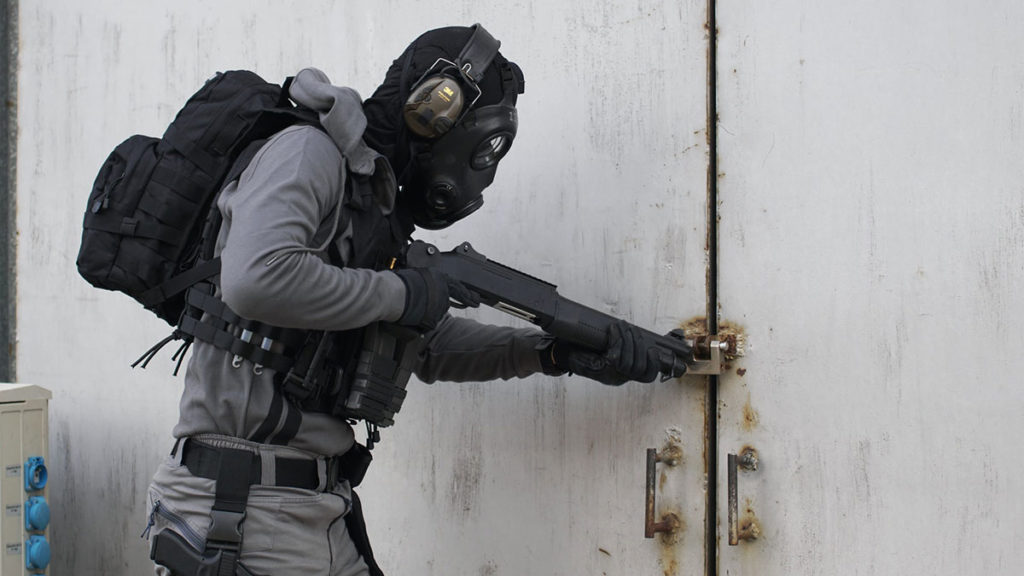
We are living in the modern world where technology both simplifies and complicates life. In a SHTF situation, will we have to revert to primitive survival or can we still rely on some of modern technology? Let’s look at prepping from the view of modern survival.
What does modern survival even look like?
To answer that question, we first have to look at what the opposite – primitive survival – looks like. Once we do that, we can begin to better understand just how we go about being a successful modern survivalist, modern day Minute Man, etc.
Primitive Survival vs Modern Survival
What is the difference between primitive survival and modern survival, and how does this affect those who are prepping in the here and now? Does one have to be completely comfortable with the idea of living like Fred Flintstone in order to be considered a survivalist? Do you have to be without any creature comforts whatsoever?
What Makes Up Primitive Survival
When most of us think of a primitive survivalist, the first image that is likely to pop up in our minds is that of a caveman or pioneer living off of the land with little more than the knife strapped to his belt. While there is most certainly not anything wrong with this image – it does help us to mentally picture what it is that we’re talking about.
What are the Characteristics of Primitive Survival?
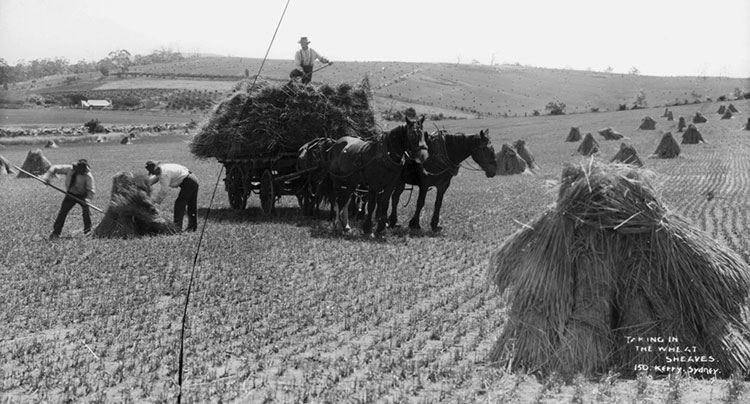
1 – Lack of Modern Conveniences
Perhaps the lowest hanging fruit here would be that the primitive survivalist – the frontiersman of the early 1800s – had a complete lack of the modern conveniences that we have at our disposal today. Daniel Boone most certainly would have had a means of starting fire, hunting game, and cooking his food, but I don’t think that anyone would argue the fact that Vaseline-soaked cotton balls, semi-automatic weapons, and high-end rocket stoves are superior in both function and weight when compared to the equipment that Boone would have carried with him out into the wild.
Technology improves with time, and thankfully, we have a wide assortment of tools at our disposal in modern times that the primitive survivalist would not have had.
2 – Hunter Gatherer
Primitive survival relies upon the land for sustenance. If you don’t catch, kill, or harvest it in a primitive survival situation, you don’t eat. As such, a comprehensive understanding of wild flora, and of how to fish, trap, and hunt, combined with the knowledge of how to properly clean and cook various types of wild game is absolutely necessary within a primitive survival situation.
3 – Reliance on Gardening/Farming
If we study the history of mankind, we find that the most primitive groups operated under a hunter-gatherer system. This is an incredibly labor-intensive lifestyle that requires constant vigilance to ensure that there is always something to eat. As a result of this never ending hunting and foraging process, little time and energy is left for improvement of tools, infrastructure, or other survival processes.
While still a form of primitive survival, a step up from the hunter-gatherer process is to become a gardener-farmer. Anybody stuck in a primitive survival situation for what appears to be the great foreseeable future (e.g. stranded on an island), should do everything in their power to become a gardener-farmer as quickly as possible.
This mode of life still requires a very close-knit dependence on the land, but it does permit extra time and energy for the development of other resources nearby. Simultaneously, it also offers a greater degree of safety over a hunter-gatherer lifestyle, as the gardener-farmer is more likely to have ample food stores built up to last him over any winter months or other periods of food shortages.
4 – No-Tech
While it’s virtually impossible to live in a world devoid of technology, one of the hallmarks of primitive survival is that it relies on technology that is ancient in origin. So while the crafting of spears, bows, and arrows is most certainly a form of technology, it is one that is millennium old, and would be considered as almost an absence of technology by the modern man.
Further Reading on Primitive Survival
Regardless of how far we’ve come in modern technology and civilization, there is – without question – a place for primitive survival skills. Brush up on your knowledge with some of these books:
- Bushcraft 101: A Field Guide to the Art of Wilderness Survival by Dave Canterbury
- Hunting & Gathering Survival Manual – by Tim MacWelch
- Primitive Technology: A Book of Earth Skills – by David Wescott
- Primitive Technology: A Survivalist’s Guide to Building Tools, Shelters, and More in the Wild – by John Plant
- Primitive Wilderness Living & Survival Skills: Naked into the Wilderness – by John McPherson
What Makes Up Modern Survival
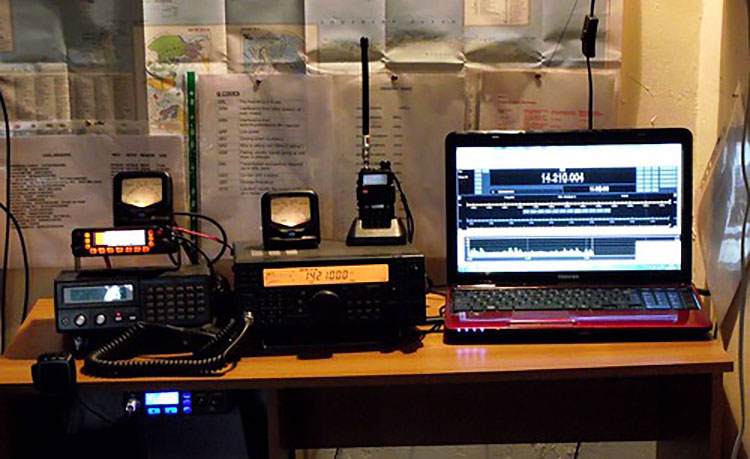
Now that we’ve nailed down what exactly primitive survival is, what is it that makes up modern survival? Let’s take a look at…
What are the Characteristics of Modern Survival?
1 – Making use of Modern Conveniences
A primitive survivalist would have access to nothing more than the tinder that he could create from the outdoor world around him. The modern survivalist has dryer lint, Vaseline-soaked cotton balls, and various other modern conveniences that make a traditionally labor-intensive survival task that much easier.
The modern survivalist should recognize what today’s conveniences are and take full advantage of them when they present themselves. Why use a bow drill when you have a Bic lighter in your pocket? This isn’t to say that understanding how to use a bow saw is a useless skill, but instead a potential waste of time within a survival situation when there are other modern methods at your disposal.
2 – Technology Itself
Technology is at the root of what it means to be a modern survivalist. If you remove technology, you are right back to being in a primitive survival world. The modern survivalist has access to equipment such as lighters, ham radio, vehicles, AR-15s, LED flashlights, and other gear that can greatly aid his day-to-day existence.
3 – Cryptocurrencies vs Precious Metals
One key difference between the modern and the primitive survivalist is in the means by which we both store and protect our wealth. While precious metals are most certainly important even still within modern society, we now have access to a form of wealth that nobody else in history ever has: cryptocurrencies.
I believe that the gold standard here would be buying Bitcoin, and it does possess clear advantages over other forms of currencies (and in full disclosure, some disadvantages as well). For starters, a cryptocurrency is weightless. Provided you’ve memorized the code specific to your account, you could theoretically travel across the world without ever needing a wallet. This means that if you were mugged, lost your clothes, or were stopped by customs agents looking for a bribe, you literally wouldn’t have anything on your person of value, nor any semblance of having wealth on you.
That’s not to say you wouldn’t have money, just that it would safely be stored in your head, ready for access at a moment’s notice.
4 – Freeze-Dried Foods
Yet another thing that we have within the world of modern survival are improvements in our food technologies. While mankind has always been able to dehydrate his food so that it will preserve longer, we now have widespread capability of other forms of dehydration as well such as freeze-drying.
This means that we no longer have to be near as concerned about loss of our food stores due to rot or vermin as did ancient man, and we no longer have to be near as concerned with the safety of what it is that we’re eating compared to ancient man as well. This by no means indicates that all of that is not important, but instead, means that we are able to rest easier that our food is safe using modern preservative methods than ancient man would have been able to.
Will TEOTWAWKI Mean Only Primitive Survival?

If we end up with some type of catastrophic even that completely throws mankind for a loop (e.g. a solar storm that destroys all electronics on the planet) would that mean only primitive survival is your option?
While such would most certainly be a drastic change in how we are used to living, it’s virtually impossible that we would be driven back to a completely primitive state. Think about what would be required for such to happen. The house that you live in was built with modern technology. It has state-of-the-art insulation in its walls. The bicycles that are in your garage were built with modern metallurgy. The tools in your shed were crafted with the same.
If a TEOTWAWKI-type event were to happen, would it destroy all of that? It could most certainly set humanity back several decades, but would it ever have the chance to set us back millennium? To do so it would have to absolutely destroy all of the technology out there that already exists!
Why TEOTWAWKI Would Still Include Modern Survival
Let’s say that we ended up with a TEOTWAWKI type event tomorrow. What would that look like? Would mankind automatically be thrown back into the stone age? Even if the big event that we’re talking about were a high-altitude EMP that made the USA completely barren of any type of electrical infrastructure for a long time to come, the prepper would still be in a situation of modern survival.
Why is this? Well, let’s take a look at two of the primary reasons…
Technology Could Still be Utilized
To begin with, even post-TEOTWAWKI, technology could still be utilized. Though the absence of electricity, truckers, large scale farms, and fully functioning hospitals would most certainly mean dire consequences for the greater part of humanity, we would not be thrown back into a situation where we were all running around half-naked.
Firearms, ammunition, some vehicles, water filters, and other forms of technology could still be utilized. Short of a nuclear Armageddon that completely destroyed every single physical item within the continental landmass of the US (which would be virtually impossible), there will always be technology that can survive man-made disasters.
However, one of the chief things that needs to be realized here is that there is still a need to protect the technology that we have against the potential disasters that are out there. The reason that a prepper preps to begin with is so that they have the tools, gear, and food necessary to survive or live more comfortably in a post-disaster world.
One of the best examples of doing such – of protecting our technology against disaster – comes from the example of using faraday cages.
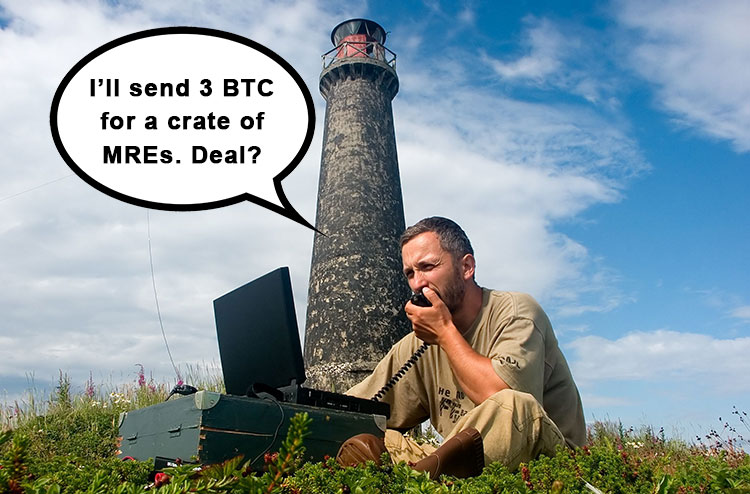
Electromagnetic pulses are a very real threat within modern society. Don’t believe me? Read Lights Out by Ted Koppel, and I’m fairly positive that you’ll change your mind. The US government even believes the threat is so real that they put together a commission report back in 2009 examining the threat. They found that within the span of one year 90% of Americans would be dead due to the consequences of a high-altitude EMP attack.
Take a quick inventory of all the electronics equipment within and around your house. Your heat pump. Your car. Your well. Your AC. Your phone. Your computer. Your TV.
You can doubtless think of countless more examples. And after an EMP attack – unless that equipment was properly protected – they would all be destroyed. The loss of technology in such an event would be a major setback towards pushing you into the margins of primitive survival.
However, there are ways that we can protect our tech from EMP attacks, and the chief example of this is via the faraday cage. Provided steps such as this are taken, our electronics technology will be protected. Provided our guns are well-lubed and maintained, our firearms technology will be protected. Provided our water filters are regularly cleaned, our pure water technology will be protected.
You’ve likely caught on to the pattern here. Provided you are protecting your technology, it’s still going to work post-disaster.
Technology May be Disabled, but Knowledge of it Would Not
The second reason that a TEOTWAWKI type event would still be a modern survival type situation would be because there would still be people who were perfectly acquainted with the technology that was destroyed. If we go back to our EMP example, even though such would kill 90% of all the plumbers, electricians, machinists, and mechanics out there, the 10% that remain would not have forgotten everything that they ever knew.
They would still know how to fix an engine, how to generate electricity, and how to keep access to running water. There wouldn’t be a need for everyone to start from scratch knowledge-wise. All of mankind’s past achievements would not be erased from one such catastrophic event. That past history is still there. It would simply be damaged, not irreparable.
How to Become a Modern Survivalist
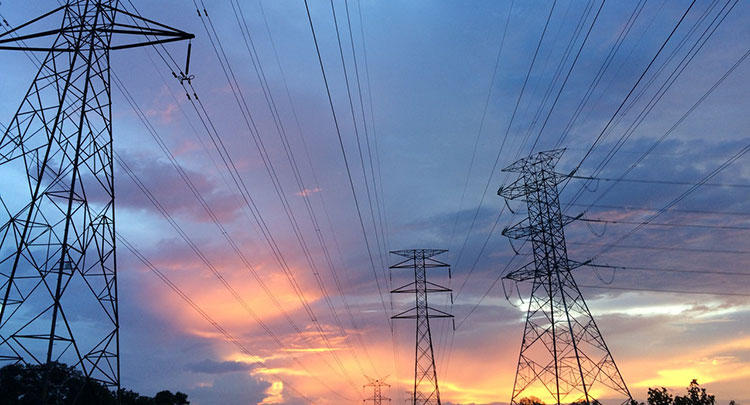
So knowing that the modern world is here to stay even if we do end up with some type of catastrophic even such as a nuclear strike, bioweapon, or EMP, what can we do to fully ensure that we are taking advantage of what it means to become a modern survivalist?
Let’s take a look…
Make Smart Use of Technology
To begin with, make use of the technology that you have around you. If it’s right there at your fingertips and would make not only day-to-day life immeasurably easier while simultaneously improving your survival outcome, why not take full advantage of it?
Why continue to rely on muzzleloaders when you can buy an AR-15? While proper map and compass reading skills are absolutely critical for any type of survival, a GPS can still be a huge time saver. If you have access to it, why not use it?
This is the same principle that militaries throughout the world follow. While it’s most certainly a wise idea to have a backup plan, knowledgebase, or backup analog gear, if you can get access to technology that will save time, effort, energy, and money, why not use it?
Know Technology’s Limits
The next thing you need to do as a modern survivalist though is understand your technology’s limits. Because, as we pointed out earlier, gear can be destroyed. Accidents to happen, there is entropy within our world, and Murphy’s Law does exist.
While using GPS technology can most certainly make your life easier now, do you have the ability to read a map and compass perchance you accidentally drop your GPS off a cliff?
What about your communications ability? While a phone or internet connection can easily allow you to get substantial messages across the world to those who need them in a few short seconds, what do you do if you no longer have access to this technology? Whether such is the result of theft, fire, water, or planned obsolescence, the point is that sometimes your technology will fail, and you need to have a backup for such when that happens.
If you no longer can communicate with your family via phone, do you have a system in place such as ham radio, that will let you talk with one another without any other type of infrastructure (other than yours) being necessary?
You need to understand the limits of the technology that you are using.
Be Wary of Technology
While technology is most certainly a wonderful thing – it’s led to marvelous advancements within the field of medicine, farming, and so on, don’t forget that just about anything can quickly become a double-edged sword. A crowbar is nothing more than a tool, but in the hands of the wrong man it can quickly become a very dangerous weapon.
The same can be said for technology. This is why the third thing the modern survivalist needs to be aware of is that technology can easily be turned against him. For starters, look at the threat of AI technology. While most instantly picture self-conscious robots walking about, much akin to a Terminator film, the truth is that AI is everywhere.
Siri, Alexa, and countless other apps on your phone and TV all utilize AI in one form or another. If we look back at 2020 we can see how this type of technology was first weaponized against the world at large. If drones with thermal imaging and facial recognition software (a form of AI) are flying about the city ensuring that people aren’t walking outside, then this technology is being used against the modern survivalist to restrict his freedom of movement.
What About with Privacy?
Data mining relies upon absolutely massive collections of tidbits of data on you that you’ve unwittingly given away throughout the course of your life. This data can then very easily be fed into algorithms that can accurately predict what you believe in, who you voted for, what you’ve purchased, and the like.
The modern survivalist needs to understand and be aware of how this use of technology to destroy his privacy could very easily be used to destroy his life as well.
What happens when that data is fed into facial-recognition drones with bombs attached? Don’t think that I’m playing to paranoia here. The technology is already out there, and proof of concept already exists. If a government uses such data to determine who supports the current regime and who does not, your technology-driven lack of privacy could very easily lead to your being found and eliminated should they so desire.
The modern survivalist can combat this though by understanding what the technologies are out there, and how they can be defeated.
Summary
As you can see, even if we do end up with a TEOTWAWKI type event in the near future, it doesn’t mean that we’ll all be thrown back into a world of primitive survival. Unless you’re tossed out of a boat onto an deserted island with quite literally nothing, you’ll still have the tools and technology required to keep you living as a modern survivalist.
Use this information twofold: first, let it be an encouragement to you. Understand that while things can most certainly grow very bad, very fast, you don’t have to worry about being completely helpless. Secondly, use this information to confidently utilized technology without feeling as a failure as a survivalist.
There is a time and a place for more primitive methods and for analog backups, but that doesn’t mean that we have to throw all current technology out of the window. And that’s what it means to be a modern survivalist.
Feature image by Specna Arms on Unsplash.
No comments:
Post a Comment